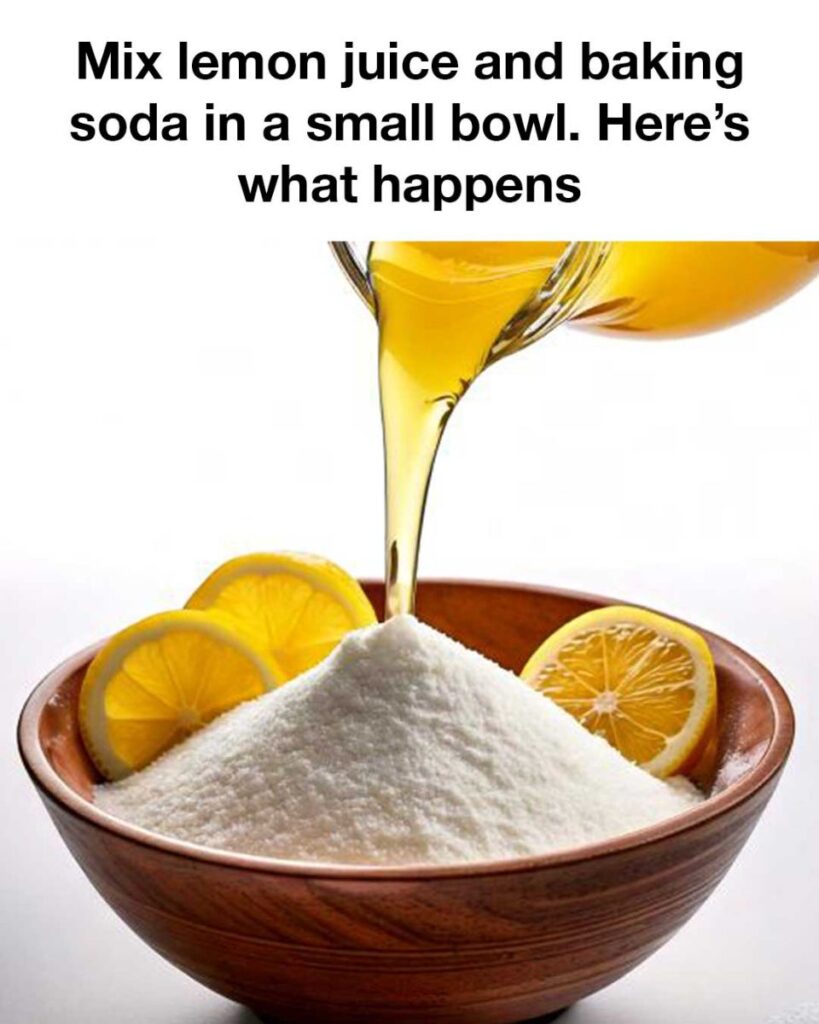I wasn’t clued in on this
Georgia Lynn
Contributing Writer
Print this recipe
Mixing lemon juice and baking soda is a simple yet fascinating experiment that can be conducted in any kitchen. This combination is not only intriguing due to its immediate fizzy reaction but also because it serves as a practical demonstration of basic chemistry principles. Whether you’re a curious student, a science enthusiast, or someone looking to understand everyday chemical reactions, this experiment offers valuable insights into the world of chemistry.
The Science Behind the Reaction
The reaction between lemon juice and baking soda is a classic example of an acid-base reaction. Lemon juice contains citric acid, while baking soda is a base known as sodium bicarbonate. When these two substances are combined, they react to form carbon dioxide gas, water, and a salt called sodium citrate. The release of carbon dioxide gas is what causes the bubbling and fizzing effect, which is a hallmark of this reaction.
Materials Needed for the Experiment
To conduct this experiment, you will need the following materials: fresh lemon juice (or bottled lemon juice), baking soda, a small mixing bowl, a spoon or stirrer, and a measuring spoon. Optionally, you may also want a small tray or plate to catch any overflow and a timer to measure the duration of the reaction.
Step-by-Step Guide to Mixing Lemon Juice and Baking Soda
1. Pour a small amount of lemon juice into the mixing bowl.
2. Measure a teaspoon of baking soda.
3. Slowly add the baking soda to the lemon juice while stirring gently.
4. Observe the immediate reaction as the mixture begins to fizz and bubble.
5. Continue stirring until the reaction subsides.
Observations and Expected Results
Upon mixing lemon juice with baking soda, you will observe an immediate effervescence as bubbles form and rise to the surface. This is due to the rapid production of carbon dioxide gas. The reaction is typically vigorous at first and then slows down as the reactants are consumed. The mixture may also produce a slight foam, and you might notice a change in the smell due to the formation of new compounds.
Exploring the Chemical Reaction in Detail
The chemical equation for the reaction is: C6H8O7 (citric acid) + 3 NaHCO3 (sodium bicarbonate) → 3 CO2 (carbon dioxide) + 3 H2O (water) + Na3C6H5O7 (sodium citrate). This equation illustrates how citric acid reacts with sodium bicarbonate to produce carbon dioxide gas, water, and sodium citrate. The production of gas is responsible for the bubbling effect observed during the reaction.
Practical Applications of the Reaction
This reaction has several practical applications. It is commonly used in baking as a leavening agent, where the carbon dioxide gas helps dough rise. Additionally, the reaction can be used for cleaning purposes, as the fizzing action can help dislodge dirt and grime. It is also a popular component in homemade science experiments and educational demonstrations.
Safety Precautions and Considerations
While this experiment is generally safe, it is important to take certain precautions. Avoid ingesting the mixture, as it can cause stomach upset. Conduct the experiment in a well-ventilated area to avoid inhaling any fumes. Be cautious of the potential for overflow, and protect surfaces that might be damaged by acidic substances.
Common Mistakes and Troubleshooting Tips
A common mistake is adding too much baking soda at once, which can cause the mixture to overflow. To avoid this, add the baking soda gradually while stirring. If the reaction seems weak, ensure that the lemon juice is fresh, as older juice may have lost some of its acidity. Additionally, using cold ingredients can slow the reaction, so room temperature materials are recommended.
Conclusion and Final Thoughts
Mixing lemon juice and baking soda is a simple yet effective way to explore the principles of acid-base reactions. This experiment not only provides a visual and tactile demonstration of chemical processes but also highlights the practical applications of such reactions in everyday life. Whether for educational purposes or just for fun, this experiment is a great way to engage with the fascinating world of chemistry.

